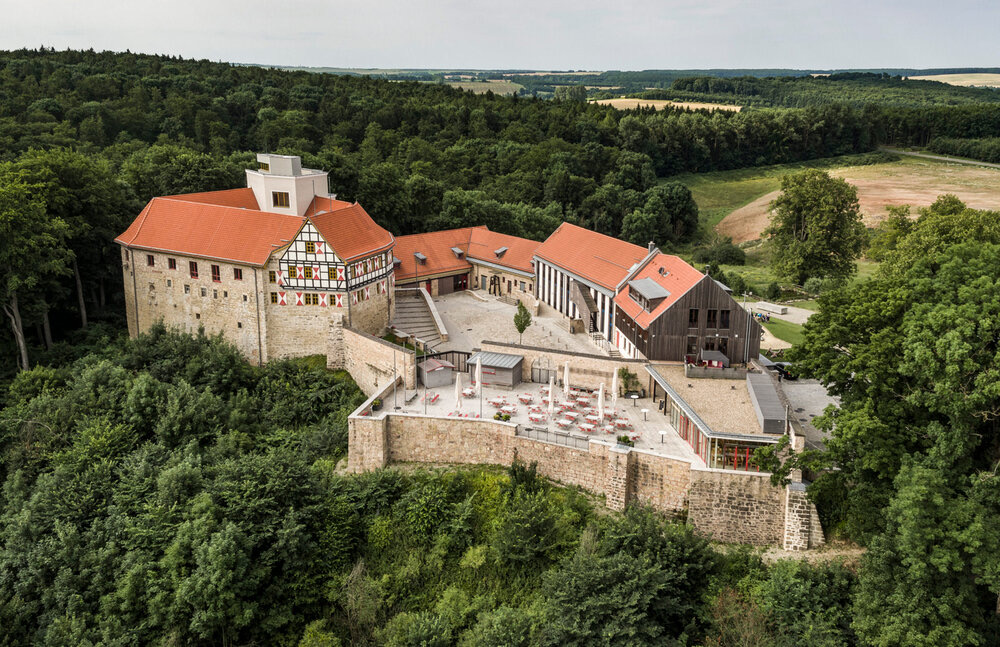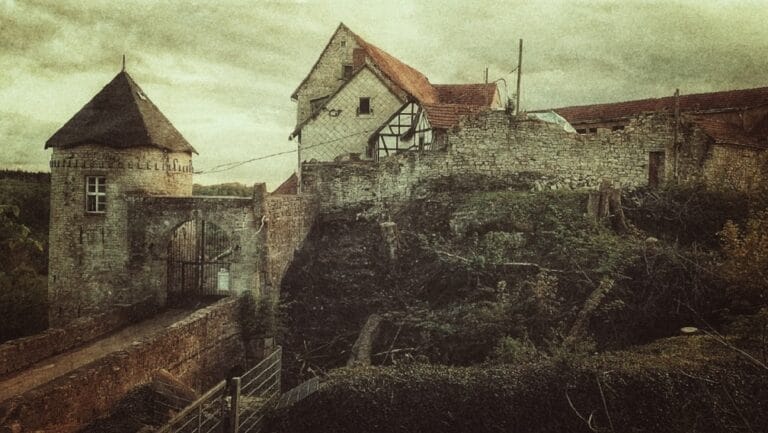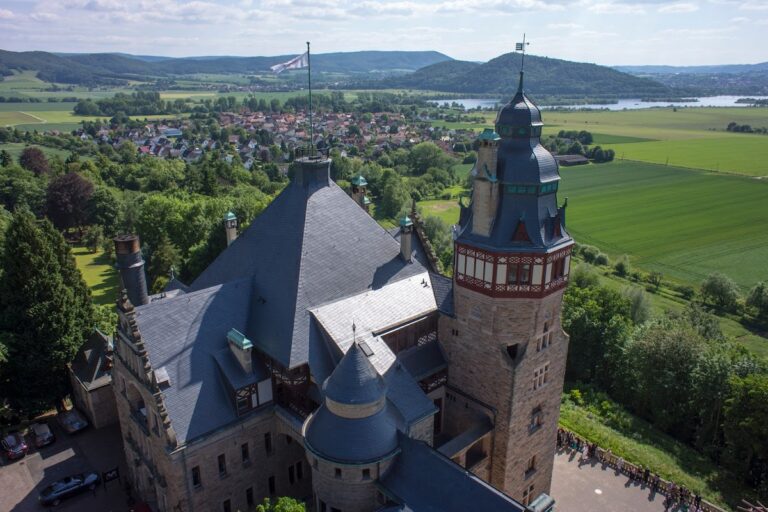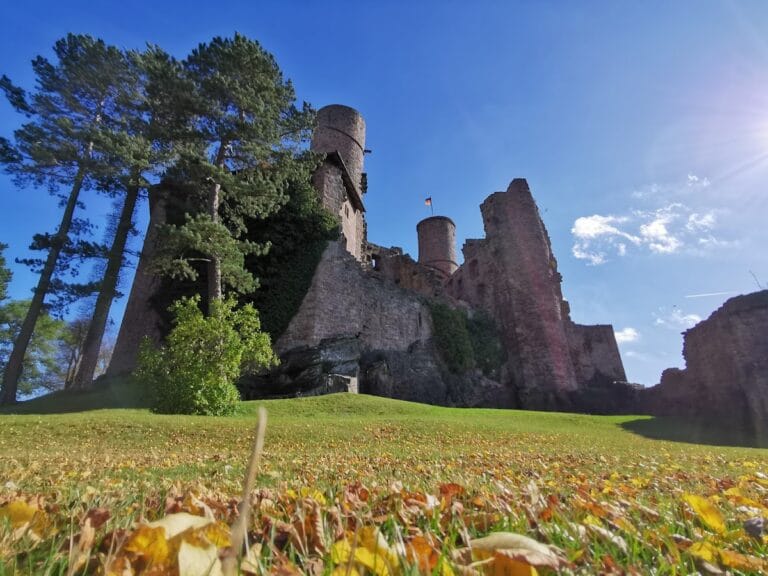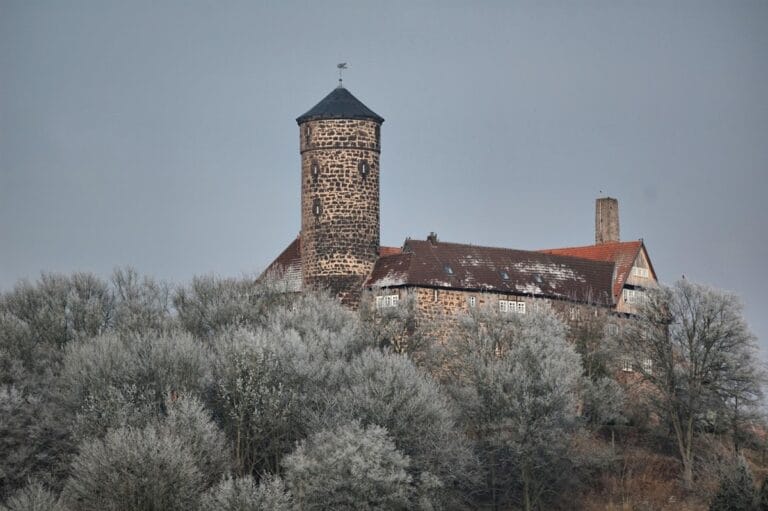Burg Scharfenstein: A Medieval Castle in Leinefelde-Worbis, Germany
Visitor Information
Google Rating: 4.6
Popularity: Medium
Google Maps: View on Google Maps
Official Website: whiskywelt-burg-scharfenstein.de
Country: Germany
Civilization: Medieval European
Remains: Military
History
Burg Scharfenstein, located in the municipality of Leinefelde-Worbis in Germany, is a medieval castle initially built around the year 1200 by the Counts of Gleichen, who established it on previously unsettled land. The castle’s early existence is confirmed by written records dating back to 1209. Its position atop a hill spur made it a strategic site during the medieval period when the region experienced frequent conflicts among local rulers.
In 1219, the castle was seized and destroyed by Landgrave Ludwig IV of Thuringia amid a dispute with the Archbishop of Mainz, Siegfried II of Eppstein. Rebuilding efforts had begun by the mid-13th century, featuring an expanded defensive wall and the addition of a second, smaller keep known as a bergfried. By 1287, the castle, referred to as “Castrum Scharphenstein,” was leased to Archbishop Heinrich II, reflecting ongoing shifts in regional control. Due to significant debts, Count Heinrich of Gleichenstein sold Burg Scharfenstein and neighboring fortresses to Archbishop Gerhard II of Mainz in 1294, bringing the Eichsfeld area under Mainz’s authority for the next five centuries.
During the 14th century, the castle functioned as an administrative center, serving as a pledge estate managing 14 villages, two monasteries, and several mills. Various noble families, including von Bodungen, Knorr, and von Wintzingerode, held the site as fiefs or pledged estates. In 1415, Burg Scharfenstein endured a siege prompted by some of its knights engaging in outlawed robber baron activities. A lightning strike in 1431 caused a nearly catastrophic fire, after which the von Wintzingerode family undertook its reconstruction.
The early 16th century brought religious upheaval to Burg Scharfenstein. During the Peasants’ War, Heinrich Pfeiffer, a former Cistercian monk who embraced Lutheran teachings, preached there under the protection of Hans von Entzenberg. The castle suffered attack and partial burning by rebel peasants in 1525 but was restored by 1532 under Friedrich von Wintzingerode. Over time, the fortress lost its military relevance, shifting toward administrative use and serving as a local prison. From 1583, the Electorate of Mainz reasserted direct control, implementing measures linked to the Counter-Reformation.
The castle’s political role declined further when, in 1802, the Eichsfeld region and Burg Scharfenstein became part of Prussia. The fortress then ceased to be a center of power and was converted into an agricultural estate, known locally as a Vorwerk. The original bergfried was dismantled in 1864 because of its poor condition. In 1909, another lightning strike sparked a fire that damaged the castle. After World War II, the property became state-owned within East Germany, where it was repurposed as a holiday facility from 1960 onwards. Since German reunification in 1990, Burg Scharfenstein has come under municipal management, with restoration projects beginning in 2006.
A modern viewing tower was completed in 2017, marking the castle’s adaptation to contemporary uses. Later that year, the site was leased to Whiskywelt Burg Scharfenstein GmbH, which transformed it into a center for whisky experiences, incorporating a hotel, restaurant, and coffee roastery, with renovations concluding by 2020. Though considered as a venue for a papal visit in 2011, the event ultimately took place elsewhere. Historically, Burg Scharfenstein also served as the administrative heart of the Amt Scharfenstein, overseeing surrounding villages and monasteries, operating a prison, and housing officials such as an Amtvogt and Amtmänner, who managed judicial and administrative tasks over several centuries.
Remains
Burg Scharfenstein occupies a promontory called Schlossberg, rising 480 meters above sea level along the northern edge of the Dün ridge. The castle complex is divided into two main parts: the inner or main castle (Kernburg) and an outer bailey (Vorburg), each featuring its own courtyard. This arrangement reflects typical medieval hill castle design, allowing for layered defense and functional separation of spaces.
The most ancient surviving structure is the lower section of a Romanesque bergfried, a type of tall, fortified tower serving as a last refuge. This bergfried dates back to the late 12th century, predating the documented foundation of the castle itself, and was identified during restoration work. It was built using rusticated ashlar stones known as Buckelquader, a distinctive technique creating rough-faced blocks with projecting centers. Although the upper portions of this tower were dismantled in the mid-19th century due to decay, the preserved base now forms part of the west wing cellar.
The medieval castle underwent multiple episodes of destruction and renewal, notably after the siege in 1219, a destructive fire in 1431, and damage during the Peasants’ War in 1525. These events mean that few original structures from the earliest building phase remain intact above ground. The outer bailey has experienced substantial changes through time, including the demolition of a large barn on its northern side, which was replaced by a terrace offering extensive views over the surrounding landscape.
This terrace overlooks the upper Leine valley and Eichsfeld basin to the north and east, reaching as far as the Ohmgebirge hills and Dün ridge. On clear days, the Harz mountains and the Brocken peak are visible in the distance. The castle’s main gate prominently displays the Mainz wheels, the heraldic symbol of the Electorate of Mainz, along with the date 1587, signifying the period of renewed Mainz control and efforts connected to the Counter-Reformation.
North of the outer bailey gate stands the Thomas-Müntzer-Linde, a monumental summer lime tree aged over 550 years and protected as a natural monument. This ancient tree is associated with Heinrich Pfeiffer, who preached Lutheran ideas at the castle during the 16th century peasant uprisings, linking the natural landmark to the site’s religious history.
Within the inner castle, the vaulted cellar once served as a prison during the castle’s phase as an administrative center. Archaeological markings by the gate and courtyard indicate the former location of the second bergfried, which was smaller than the main tower. Despite the challenges posed by local limestone, known as Wellenkalk, which was unsuitable for building, the castle walls were constructed using other materials to provide durable fortification.
Modern interventions include geothermal heating installed during restoration efforts and the erection of a roughly 20-meter-high observation tower completed in 2017. This tower was built near a collapsed section of the castle’s outer wall from the 1960s, blending historical preservation with contemporary enhancements. Together, these features reveal the layered history and continuous adaptation of Burg Scharfenstein through centuries of change.

